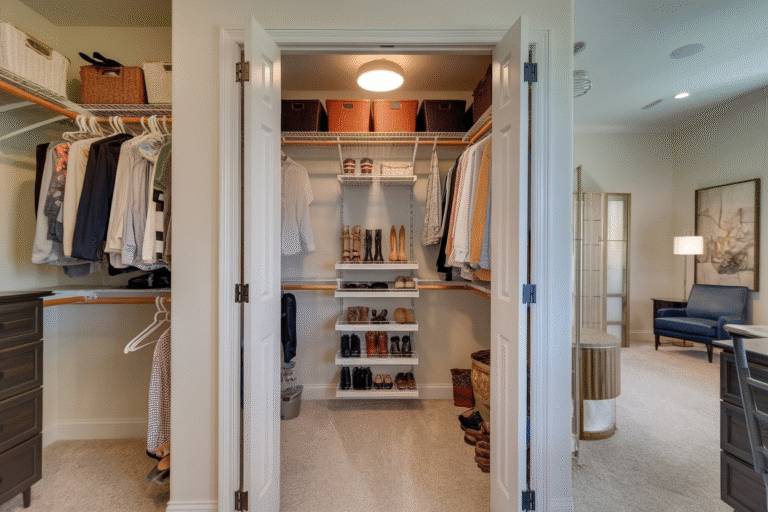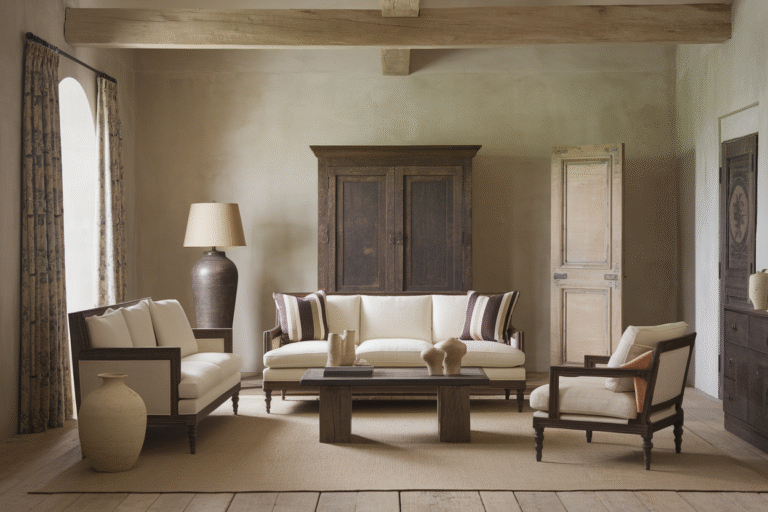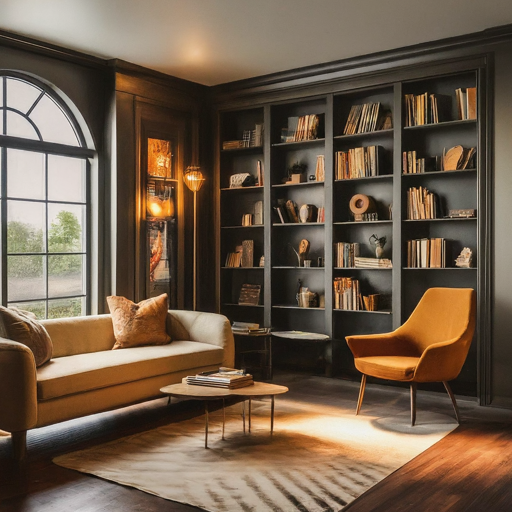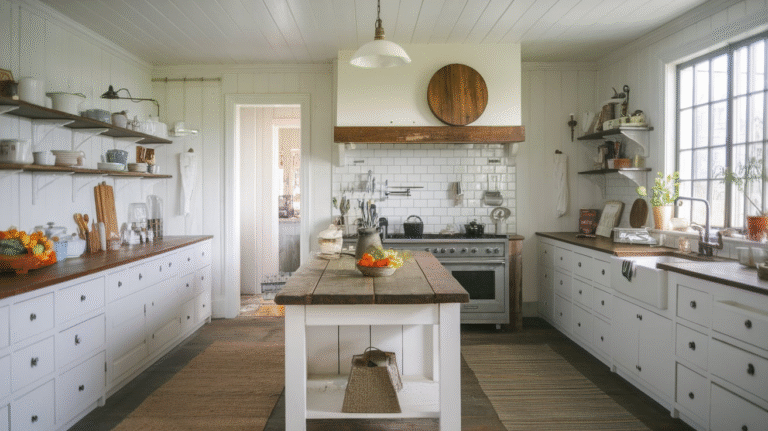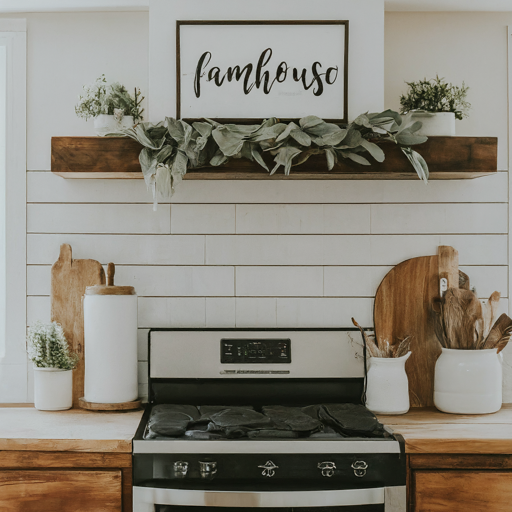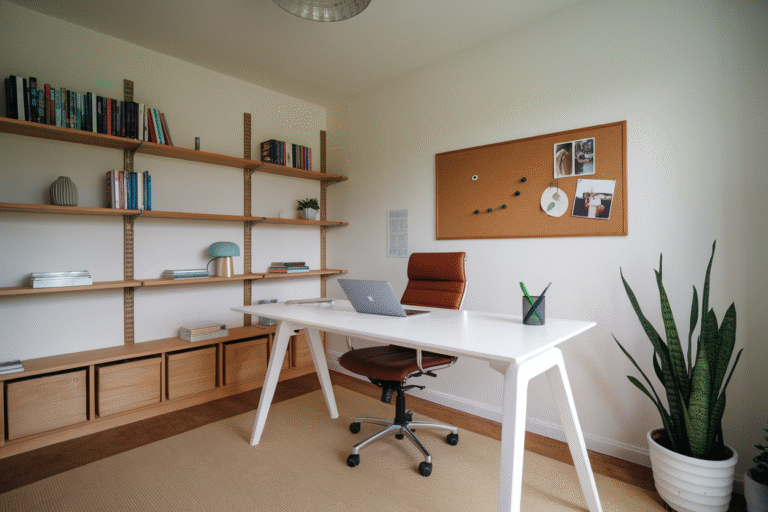19 Unique 1910 Kitchen Style Ideas
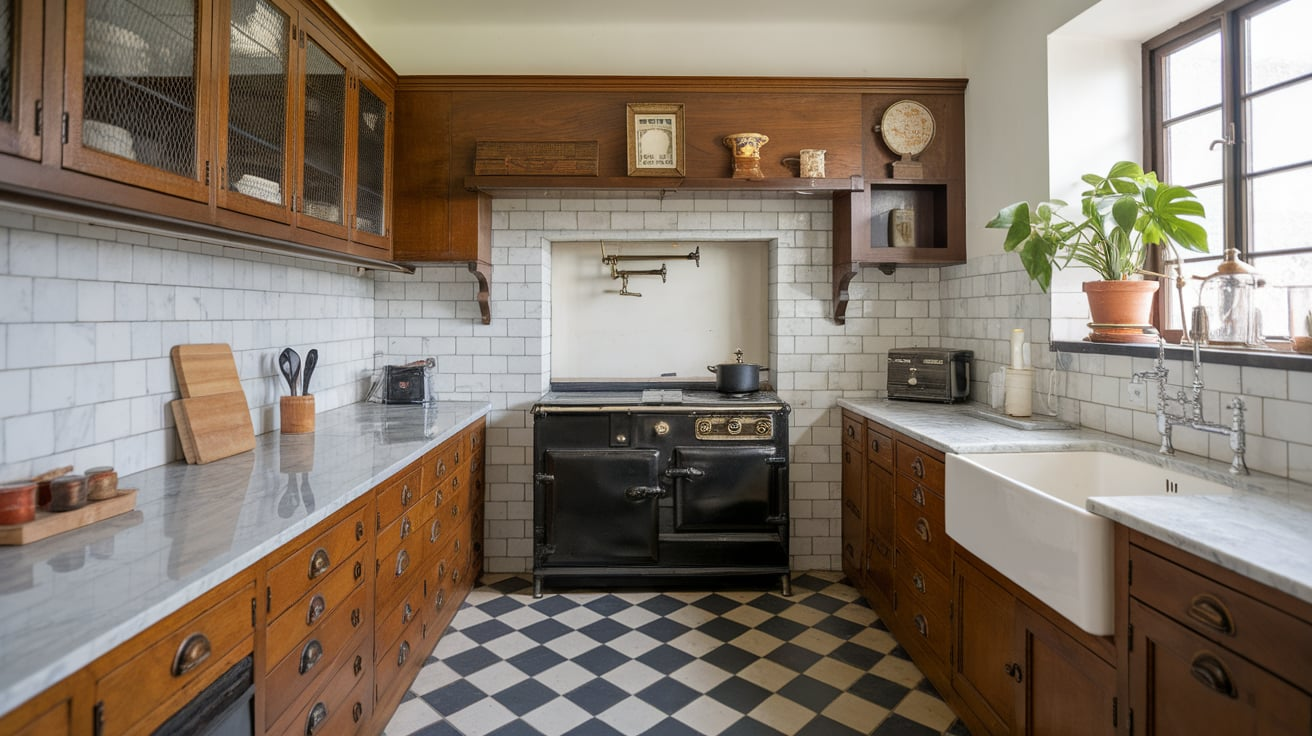
The 1910s were an era of sturdy craftsmanship, utilitarian charm, and quiet elegance. Kitchens back then were the engine rooms of every home—a little chaotic, slightly rustic, but built to last.
Unlike today’s showpiece kitchens, a 1910 kitchen was unapologetically practical. Yet, in that simplicity lived a beauty that still captures hearts today.
1. Butler’s Pantry: The Hidden Workhorse
Tucked between the kitchen and the formal dining room, a butler’s pantry was the command center of meal prep and storage. In the 1910s, these small auxiliary spaces were lined with wooden cabinetry, often painted white or cream, and featured counters for laying out dishes.
If you have the space, adding a butler’s pantry can be your secret prep zone or a stylish coffee bar. Glass-front cabinets and marble countertops will keep it historically accurate while serving contemporary needs.
2. Inset Cabinetry: Built to Fit Like a Glove
Inset cabinets were the standard in the 1910s. Rather than overlaying on the frame, the doors were set inside the cabinet frame, creating a sleek, seamless look. These cabinets were often handmade with wood like oak or maple, built to last through generations.
You don’t need to rip out your modern cabinets—custom cabinetry or retrofitting the faces with inset-style fronts can echo the same effect.
3. Icebox Refrigerators: Before the Fridge Was Cool
Long before stainless steel appliances dominated the kitchen, the icebox was the reigning champ of cold storage. These wooden, metal-lined cabinets held a large block of ice to keep food chilled.
Modern replicas exist, but if you’re aiming for authenticity, hunt down a restored antique icebox to use as a pantry or storage cabinet. Its vintage soul adds instant 1910 charm.
4. Freestanding Furniture: Built-In Wasn’t Always In
Instead of today’s built-in cabinetry and counters, 1910 kitchens often relied on freestanding furniture—like worktables, sideboards, and open shelving.
Replicate this look by incorporating a vintage baker’s table, metal-legged island, or even a salvaged hardware store counter. Bonus points if it has drawers with cup pulls.
5. High Back Farmhouse Sinks: Deep & Proud
These sinks weren’t just functional—they were showpieces. High back farmhouse sinks, typically made from porcelain or cast iron, had tall backsplashes to protect the wall and deep basins for serious washing.
Installing a reproduction wall-mounted sink instantly channels the 1910 aesthetic. Pair it with vintage bridge faucets for the full effect.
6. Checkerboard Floors: Drama Underfoot
Many 1910 kitchens featured linoleum or tile floors in a checkerboard pattern. Black and white was common, but you could also find soft greens and creams.
Don’t be afraid to go bold. A classic checkerboard tile floor adds old-school glam while staying surprisingly timeless. It’s one of the easiest ways to root your kitchen in the past without sacrificing durability.
7. Beadboard Walls and Ceilings: Textural Warmth
If drywall is toast, beadboard is the jam. In the 1910s, beadboard paneling was a budget-friendly way to add character and protect surfaces from splashes and scrapes.
You can add vertical beadboard to walls, backsplashes, or even the ceiling. Paint it white, soft sage, or robin’s egg blue for that cozy farmhouse vibe.
8. Pull Chain Lights: Flick the Switch to the Past
Electricity was still catching on in the early 20th century. Many homes used pull-chain pendant lights or bare bulbs hanging over the sink or table.
Today, you can source vintage reproduction lighting with exposed bulbs, cloth cords, and metal shades. Even better? A wall sconce with a ceramic pull chain will make guests feel like they’ve stepped into a time machine.
9. Antique Stoves: The Beating Heart of the Kitchen
1910 kitchens revolved around coal or wood-burning stoves—chunky, ornate, and built like iron castles.
While authentic models are more decorative today, you can invest in modern gas ranges with vintage styling. Companies like Elmira and Heartland produce stoves that look 1910 but cook like 2025.
10. Painted Wood Cabinets: Color with a Whisper
Cabinets weren’t flashy in 1910. Most were painted soft neutrals—creamy whites, dusty blues, pale greens. The muted palette helped bounce light in kitchens that lacked it.
Use matte or eggshell finishes for authenticity, and don’t be afraid of brush marks. That slightly imperfect finish is part of the charm.
11. Hoosier Cabinets: The OG Kitchen Command Center
Before upper cabinets were a thing, the Hoosier cabinet was the kitchen MVP. A self-contained workstation with drawers, shelves, spice racks, and even flour sifters, it combined storage and prep space in one freestanding unit.
You can still find antique Hoosiers on the market, or have a reproduction built. Use it to store baking supplies or as a statement island.
12. Open Shelving: Let Your Dishes Do the Talking
Kitchens in the 1910s often featured open shelves instead of upper cabinets. They made everything easily accessible and helped the small rooms feel larger.
Mount simple wood planks with metal or wooden brackets, and let your vintage dishware or glass jars take center stage.
13. Wainscoting: A Wall’s Best Friend
Much like beadboard, wainscoting added formality and protection to kitchen walls. It was often paired with floral wallpaper or painted above with light pastel hues.
Even if your kitchen is sleek and modern, installing wainscoting on one wall can create a visual throwback without overwhelming the space.
14. Tin Ceilings: The Crown Jewel
If you’re lucky enough to uncover a pressed tin ceiling during a remodel, count your blessings. These highly decorative metal panels added elegance and fire protection to early 20th-century kitchens.
You can install new tin ceiling panels or even faux versions made of lightweight materials. Paint them white or metallic bronze to honor the original style.
15. Wall-Mounted Soap Dishes & Accessories
Everyday kitchen details in 1910 were thoughtfully built-in. Wall-mounted soap dishes, metal towel rods, and cup holders were common, often made of porcelain or enameled iron.
Scour antique shops or architectural salvage yards for authentic accessories. Even one or two details like these can subtly nudge your kitchen toward a vintage feel.
16. Clawfoot Utility Tubs: Not Just for Bathing
While usually associated with bathrooms, clawfoot tubs were also found in utilitarian kitchens and laundry areas. Shorter versions served as soaking tubs or even indoor planters.
While not common today, a reproduction utility tub with claw feet can be a quirky addition near a window or mudroom entryway.
17. Handcrafted Tile Backsplashes: Earthy & Elegant
Ceramic tile work in 1910 was often handcrafted, matte-finished, and simple in layout. Subway tiles had just gained popularity and were frequently used in stacked or running bond patterns.
For a historical touch, opt for handmade ceramic tiles in muted hues or crackle-glazed subway tiles for your backsplash. Pair with dark grout for contrast.
18. Enamelware Everything: Durable and Decorative
If you had a kitchen in 1910, chances are your cookware and serveware were enamel-coated. Bowls, pitchers, ladles—enameled steel was prized for its durability and ease of cleaning.
Incorporate enamelware into your kitchen as functional décor. Hang a few enamel pans, display an old enamel coffee pot, or store utensils in a white-and-blue enamel canister.
19. A Touch of Utility: Hooks, Pegs, and Rails
1910 kitchens were lean, efficient, and knew how to use every inch of space. Instead of fancy organizers, homeowners used wall pegs, metal hooks, and hanging rails for towels, utensils, or pots.
Use a wooden peg rail along a wall or above your sink to hang essentials. This simple change can add an instant farmhouse flavor to your modern space.
Conclusion
In many ways, a 1910 kitchen was a place of hustle, heart, and hands-on living. There were no gadgets to whisk away your chores, but there was a rhythm and poetry to how those kitchens functioned. Every scratch in the floor, every worn drawer pull told a story.
Today, you don’t need to turn your kitchen into a museum to honor the 1910s. Instead, layer in these vintage-inspired elements—a wall sconce here, a Hoosier cabinet there—and let your kitchen evolve into a space that whispers the past while humming with the present.

